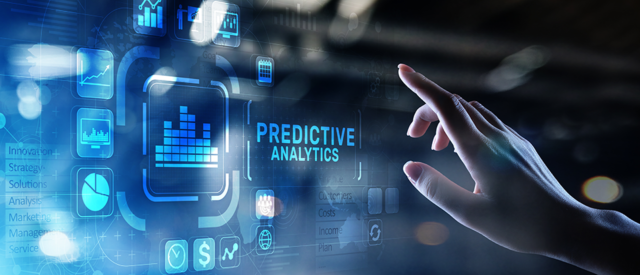
Opportunities and Problems with Digital Twins | Part Two: Definition – What Can I Do With This?
Ways to Use Digital Twins
This is part two of a three-part series on digital twins. In part one, we listed some of the definitions of digital twins and how they can be constructed. That leaves a more important question, “what can I do with this?”
There are perhaps a dozen ways to use digital twins, too many for this short article. We’ll focus on five of the most important.
5 Ways to Define Digital Twins
1. Historical Records
Keeping records matched to each real-world object can be very powerful. Begin with a Configuration Twin (defined in part one of this series). Then tie failures, warranty claims, and service life information to each individual digital twin.
Are parts from different vendors creating different in-service life results? Does the rebar from one plant rust faster than the steel from another? Does one of our software titles run better on a Mac than on a PC?
This idea of watching products through their life is very valuable to the Original Equipment Manufacturers (OEMs) regardless of the product. The Return on Investment (ROI) will vary with the product’s cost and life. Digital Twins for fast-moving, expensive products will generate a more significant ROI than long-lived low-priced products.

2. Human Training and Maintenance Coaching
Many physical products are designed in sophisticated 3-D Computer-Aided Design (CAD) systems. This means a sophisticated rendering of the product can be presented with Virtual Reality (VR) goggles. When we marry VR with a configuration twin, we can show humans what to expect when they do maintenance and repairs. A classic example is to show the right sequence for disassembly down to the right order to remove fasteners.
In addition to coaching on the right way to do things, we can avoid common errors. We can show the kind of oil needed for each part of each machine. No engine oil in the transmission or the hydraulics. No diesel-rated oil in gasoline engines. These use cases can often be addressed with “mimic twins” (defined in part one of this series) as we move beyond representing the configuration and mimic some of the “real twin” behavior.
Error prevention becomes even more important for electric and electronic systems. The difference between a 12- and 14-gauge replacement wire may not be visible to the maintainer or the inspector who checks the job, but it can be critical in an aircraft or electric car. Choosing among software loads can be even more bewildering. The virtual coach can provide sound advice based on the Digital Twin.
One ROI use case for this Digital Twin can benefit the OEM who might offer the digital VR service. Another ROI use case might benefit the organization performing maintenance. They can now expect faster work from a moderately skilled workforce. The equipment owner should expect faster and higher quality maintenance, repair, and overhaul (MRO).
But these ROI examples can take a long time to yield benefits in many cases.
3. Pattern Discovery
A typical use case for Mainstream AI Methods (MAIM) is pattern discovery. A common misconception is that patterns somehow leap out of the computer unaided by humans. This can be very useful but may also be elusive. Other barriers will be discussed in part three of this series.
The most important choice in a pattern discovery approach is distinguishing between a “failure twin” and a “functional twin.” A failure twin represents various failure modes. A functional twin represents normal operations. “Not normal” does not define “what’s wrong?” So, this is a critical distinction.
The most common use case is understanding a pattern that seems to be real but unexplained. For example, we might know that the HVAC systems in a hotel chain have different failure modes in different climates. But we might learn more by pattern discovery across thousands of HVAC units in hundreds of properties. Vibration analysis is a further example of pattern discovery. Long-term capture of vibration data, paired with failure records, is a means of warning of impending problems. This method is more reliable with Digital Twins (historical failures are paired with configuration).
For vehicle fleets, MAIM pattern discovery may be useful to estimate the remaining life of simple subsystems, like batteries.
The ROI for pattern discovery can be terrible or excellent. Condition-based maintenance (CBM) of key components (like batteries) can be inexpensive to implement and result in meaningful cost avoidance. The terrible part of pattern discovery is one of the barriers we’ll discuss in part three.
4. Prediction
Sophisticated Digital Twins can provide impressively accurate predictions. Lone Star built a twin for an aircraft operator with a large fleet. Our twin correctly forecasted the number of usable assets far into the future (spoiler alert – they didn’t like the prediction). Today, we provide these kinds of predictions to owners and operators of a wide range of assets; oil wells, trucks, aircraft…
 These Digital Twins are nearly always hybrid twins (as defined in part one of this series). One technique can rarely provide the kind of useful predictive power needed to meet most use cases. These twins may also blend both “failure twins” and “functioning twins.”
These Digital Twins are nearly always hybrid twins (as defined in part one of this series). One technique can rarely provide the kind of useful predictive power needed to meet most use cases. These twins may also blend both “failure twins” and “functioning twins.”
The ROI from prediction can be very powerful. It allows for the long-term, low-price acquisition of spare parts. It provides a means for planning and training a maintenance organization. The list of benefits is too long for this short article. The lowest ROI Lone Star has seen from this type of twin is 20:1 ($20 payback for each $1 of Digital Twin investment).
5. Prescription
The most sophisticated form of Digital Twin matches predictions with alternatives. A critical asset in oil production is the Horizontal Pumping System (HPS), moving crude oil, natural gas, and water. HPS systems fail for many reasons, so redundancy is common. They are expensive to operate. A 100-horsepower pump uses about twenty times more electricity than a large home. In the ROI case for Lone Star’s MaxUp® Energy HPS twin, prescriptions can lower energy usage, improve reliability, and reduce the need for redundancy.
In closing
The ROI from prescriptions varies with Digital Twin applications, but they are significant.
Why doesn’t everyone have Digital Twins everywhere right now? In part three, we will look at business problems – barriers & business models.
Tags In
Recent Posts
- Lone Star Analysis Awarded Digital Twin Patent for Operations and Maintenance Applications
- The Steps to Laying Out an Embedded System Quantum Roadmap Featured in Military Embedded Systems
- Steve Roemerman Recognized as Aerospace AI Leader in Inaugural AI 75 List
- Lone Star Analysis Ltd. Sponsoring RAFA Rides 2024
- The Power of Predictive Modeling in Complex Problem Solving featured in COTS Journal